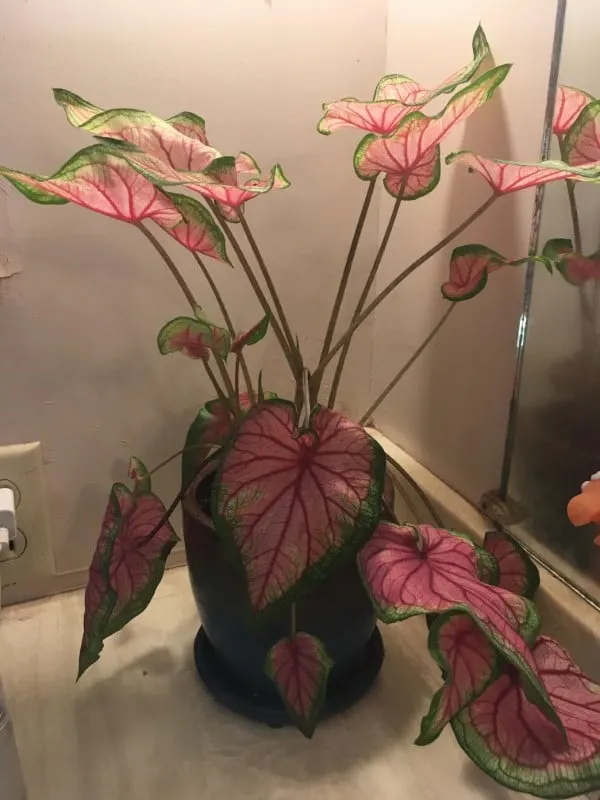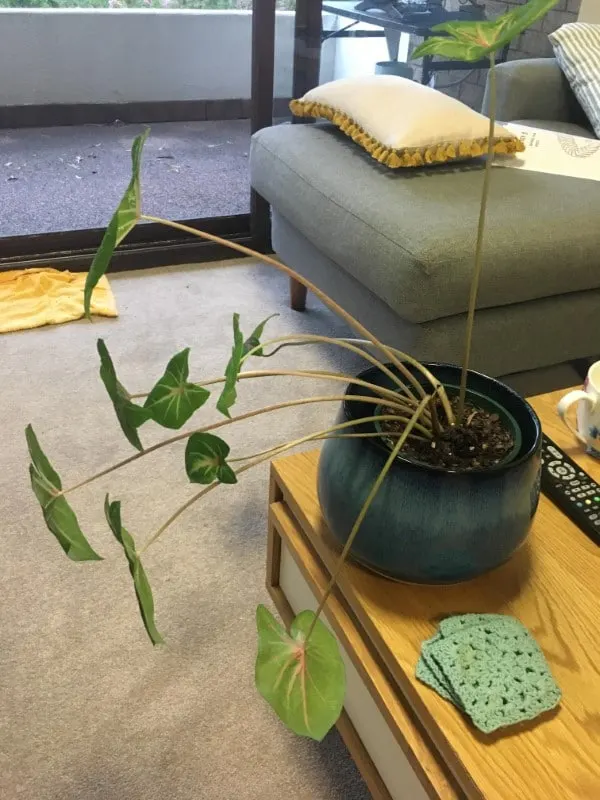Why is my Caladium drooping? Are you also wondering, like many gardeners out there? Well, firstly let us tell you about Caladiums. Caladiums are one of the most popular flowering plants available.
These tropical plants are sold in many different colours, shapes and sizes, making them very attractive to gardeners who want to add something unique to their outdoor decor.
While they’re easy to plant and maintain, they require careful attention, especially when watering them. If you notice your Caladium plant starting to droop or seem wilted, then you may have a reason to worry.
It could be that you’re overwatering your Caladium or that there’s something else wrong with the plant.
Thus, this article here is curated exactly for those of you who are looking for the answer to why is my Caladium drooping. All you need to do is stay with this article till the end, and you will get to know the actual reasons why Caladiums droop and how you can take its care.
So, let’s get started.

Reasons That Answer Why Is My Caladium Drooping
1) Overwatering or Underwatering
Both overwatering and underwatering can cause your Caladiums to droop, but in general, underwatering is more likely to be the problem.
Underwatering is one of the common causes that answer your query, “Why is my Caladium drooping?”. It results in a loss of root function.
So, if you have time, it’s best to water and wait for things to look better before watering again. Also, you can check the dryness by sticking your finger into it. But if you don’t have time, then a quick dose of water is better than nothing at all.
Overwatering is less common and usually happens when you don’t allow your Caladium to dry out completely before watering again. Hence, root rot will quickly follow in the plant with such poor care.
2) Temperature Stress
Many people among you might think of Caladium as a tropical plant. But they’re subtropical or temperature tolerant but not necessarily frost-tolerant. So, if you have had a hard winter, your Caladium is probably going through what gardeners refer to as temperature stress.
It’s common to see your Caladium droop and leaves fall off during periods of temperature stress. But as long as you give your plant time to recover, it will likely bounce back and continue growing normally.
Also, remember that most plants adapt better to light exposure or temperature changes when exposed slowly.
It is also vital to water less frequently than recommended on package instructions while transitioning between warm indoor temperatures and cooler outdoor weather. Overwatering can also give unnecessary stress to plants during changing conditions.

3) Improper Planting
Though caladiums are generally easy to grow, improper planting can lead to trouble. If your Caladium is placed in locations with strong winds and less sunlight, drooping of the plant can be seen.
It also needs good drainage and air circulation to grow well. You need to ensure your Caladium is away from hot appliances and other potential heat sources.
If the leaves of your Caladium are drooping, you might need to repot your plant. Ensure there’s plenty of space between its roots and any nearby objects. Or else your plant might dry out or even die eventually. Also, watering your Caladium regularly is essential without letting the soil get too soggy.
4) Poor Soil Conditions
If you are looking for the answer to your query, “Why is my Caladium drooping?” poor soil conditions may be one.
If you recently transplanted your Caladium or repotted, you may need to replant again. On the other hand, if it’s in regular potting soil, it could be a sign that it’s time for a repotting session.
Check This Best Organic Potting Mix on Amazon
When repotting, be sure to use fresh soil and provide ample space between plants. Avoid leftover dirt from previous plantings and replant at least 12 inches apart.
It also helps if you change out more than half of your potting soil, adding in some new organic material as well. This can help revitalize older soils.
If everything else fails, take your Caladium outdoors for a while and see if their condition improves after spending some time with Mother Nature.
5) Fertilizer Problems
Caladiums have very specific fertilizer needs. If you overfeed them, they can develop root rot and leaf burn. It’s recommended that you give them one balanced dose of water-soluble plant food every two weeks during their active growing phase.
This is important if your plants are in soil that contains only a little organic matter (light, sandy soil) or none at all (rocky soil).
Get This All Purpose Water Soluble Plant Food in Amazon
- Full of essential nutrients, it instantly feeds to grow bigger, more beautiful plants versus unfed plants
- Feed every 1-2 weeks
- Use with the Miracle-Gro Garden Feeder or any watering can
- For all flowers, vegetables, trees, shrubs and houseplants
- Safe for all plants, guaranteed not to burn when used as directed
If you’re using chemical fertilizers, use only those specifically formulated for foliage plants. For example, do not use a general-purpose houseplant fertilizer for Caladiums. It can burn their roots and stems.
6) Pests & Diseases
One of the most common problems Caladium faces is infestation by pests or diseases. So if you’re noticing your plant has leaves that are turning yellow or brown, it could be due to a problem with insects or disease. Two common pests that affect Caladium are Mites and Aphids.
If you notice any signs of pest damage, such as Spider Webs on or near your plant, it’s best to use pesticides immediately because these types of pests multiply quickly if left untreated.
Common diseases affecting caladiums include Leaf Spot and Powdery Mildew. These aren’t generally harmful to humans but can severely diminish your plants’ beauty and value.
Watch This Video For Caladium Tips & Tricks
Conclusion
Although caladiums come in many sizes, colours and shapes, they share a common problem: drooping leaves. So the reasons that answer your query, “Why is my Caladium drooping?” and understanding them can help you treat or prevent further leaf loss and keep your plant thriving.
There are several potential causes for Caladium drooping. Some of them are overwatering or underwatering the plant, temperature stresses, poor soil conditions, improper planting, getting infested by various pests and diseases and overfertilization. So you may need to experiment to see what works best for your plant.
It’s important to always be cautious while working with Caladium. It’s easy to get burned as Caladium tend to exude a sap that can irritate your skin or eyes. In addition, pesticides containing Dursban (Chloropyrifos) should not be used on any part of this plant.

